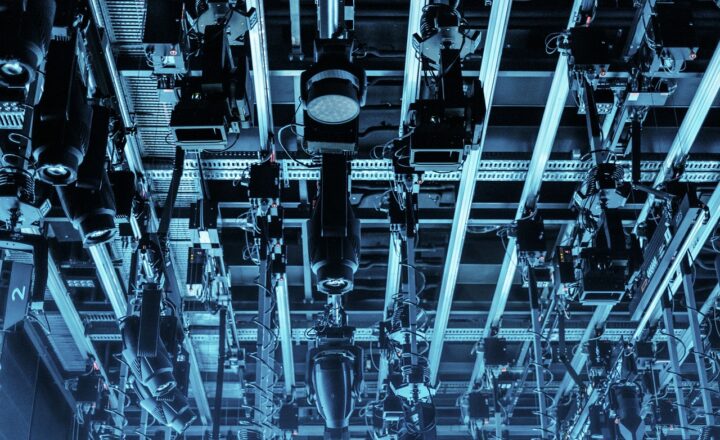The Allure of Militarized Tech: How Weapons Have Evolved in the Digital Age
November 18, 2024

In an era where technology drives nearly every aspect of our lives, the arms race has also evolved, integrating advanced technology into military applications. The evolution of weapons from traditional physical arms to sophisticated digitized tools reflects not merely an improvement in efficacy but also a profound shift in the dynamics of warfare itself. This article delves into the allure of militarized tech, showcasing how emerging technologies shape the future of defense and conflict.
1. The Foundations of Militarized Technology
The roots of militarized technology trace back centuries. The invention of gunpowder transformed combat and strategy, while the industrial revolution birthed mechanized warfare. Today, we witness the integration of digital technology, artificial intelligence (AI), and robotics into military frameworks.
The modernization of warfare led to the development of complex weapons systems, generating significant debates around ethics, safety, and global security.
2. The Rise of Automation in Weapons Systems
Automation is at the forefront of militarized tech evolution. With the integration of robotics and AI into weapons systems, machines are now making decisions faster than human operators. This section explores:
- Drones: Unmanned Aerial Vehicles (UAVs) have revolutionized surveillance and strike capabilities. Equipped with advanced sensors and high-definition cameras, drones allow military forces to gather intelligence or engage targets without risking human lives.
- Autonomous Weapons: Systems like the infamous loitering munitions and robotic ground vehicles are gradually becoming feasible for deployment. These weapons can autonomously identify and engage targets based on their programming.
- Precision Strikes: Enhanced targeting capabilities have shifted warfare dynamics from broad bombings to precision strikes, minimizing collateral damage and improving mission success rates.
The allure of automation lies in its efficiency and precision, allowing the military to respond rapidly to emerging threats.
3. Cyber Warfare: A New Battlefield
As layers of traditional conflict have converged with the digital realm, cyber warfare stands out as a profoundly transformative aspect of modern militarized tech. Evidence of this can be found in various high-profile attacks that shifted the battlefield into cyberspace.
- Hacking and Espionage: Nation-state actors rely on hacking to compromise systems, extract sensitive information, and disrupt critical infrastructure. Attacks like the 2007 cyber assault on Estonia are harbingers of what other nations could face.
- Information Warfare: The digital space allows for the dissemination of propaganda and misinformation, shaping public opinion and causing social discord as a covert strategy.
- Defense Mechanisms: The rise of cyber security measures emphasizes skills in threat detection, defense, and rapid response to neutralize cyber threats before they cause infrastructural damage.
Although cyber warfare lacks physical destruction, its psychological impact and potential to undermine national security render it a powerful modern weapon.
4. The Role of Artificial Intelligence in Warfare
Artificial Intelligence is infiltrating military operations, influencing strategy and unauthorized combat applications. Some key implications include:
- Data Processing: AI systems can analyze vast amounts of data from battlefield conditions to predict enemy movements, enhancing decision-making.
- Autonomous Combat: AI-powered drones and robots are being developed to carry out missions with reduced human intervention, potentially enhancing operational efficiency.
- Simulations: Enhanced training environments leverage AI, allowing military personnel to practice with realistic simulations that adjust in real-time based on actions taken.
The duality of AI’s benefits and risks invokes critical dialogue among lawmakers and military leaders regarding accountability and control in increasingly complex warfare scenarios.
5. Ethics and Regulation of Militarized Tech
The overarching allure of militarized tech raises ethical considerations and regulatory debates. As autonomous weapons and AI are poised to redefine warfare, critical questions emerge:
- Accountability: Who is responsible for the actions of autonomous weapons? Establishing accountability frameworks is a pressing concern.
- Human Rights: The potential for collateral damage and indiscriminate warfare looks dire when human decision-making is removed. Ethical implications must be addressed before deployment.
- Global Arms Race: The proliferation of militarized tech could lead to new arms races, with nations racing to develop advanced weapons systems. International cooperation is essential to regulate and mitigate risks。
Creating an ethical framework will be vital to navigating the challenges of high-tech militarization while ensuring responsible governance.
6. Conclusion: The Future of Militarized Tech
The allure of militarized technology is undeniable, representing a fundamental shift in the landscape of warfare. As nations continue to invest in and develop advanced weaponry, they must reconcile technological advancements with ethical considerations and global security. Navigating this complicated terrain will require visionary leadership, transparency, and even collaboration between nations.
In summary:
- The evolution of weapons signifies a transformative period in military operations.
- Automation and AI have enhanced efficacy but raise significant ethical and accountability concerns.
- Global cooperation is crucial to restrain militarized tech arms races and promote peace.
As we look to the future, the balance between security and ethical militarization will shape our geopolitical landscape and define the essence of modern warfare.







